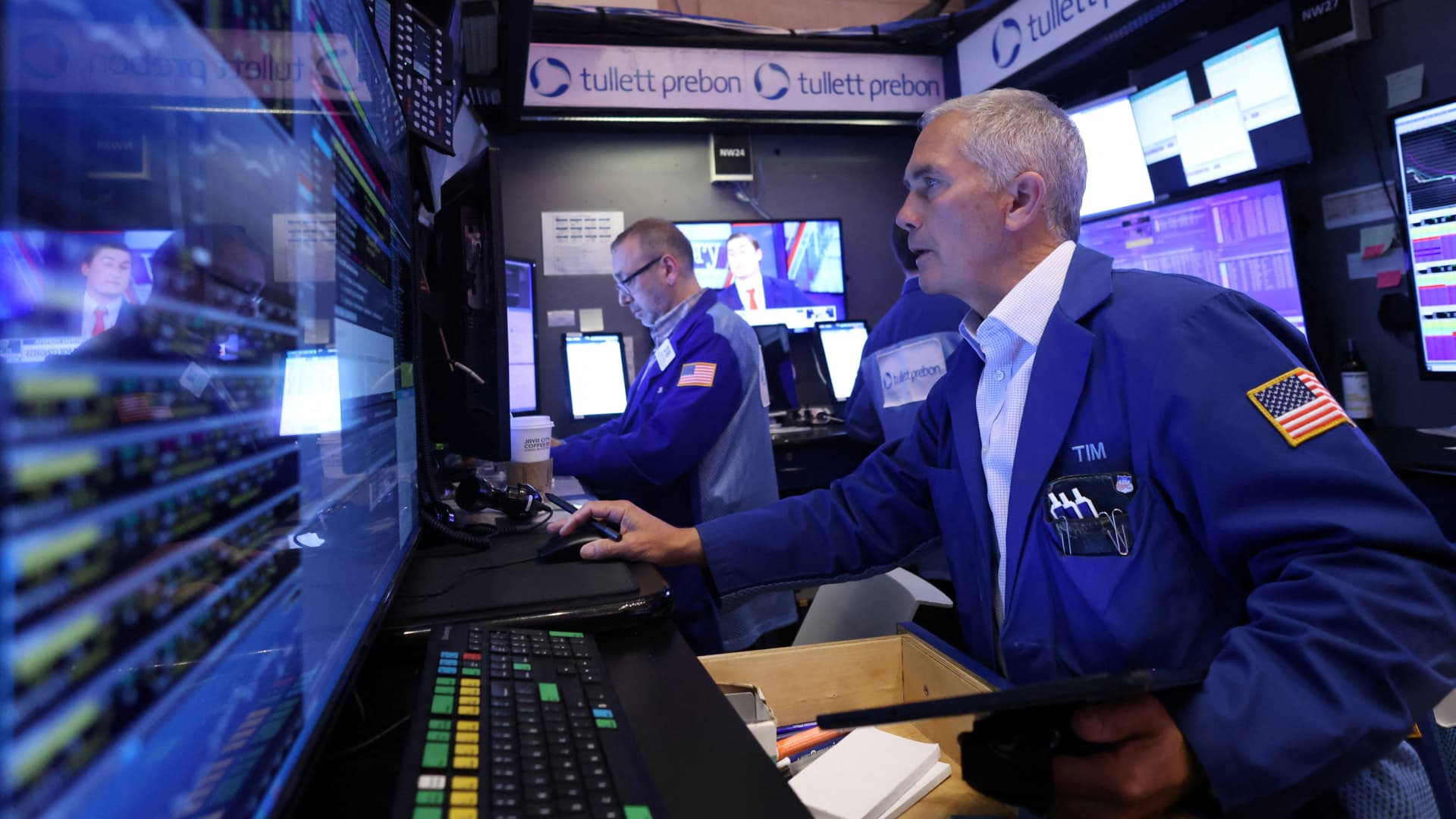Dow falls more than 300 points as oil spikes on rising Middle East tensions: Live updates

Market information is displayed on monitors as a trader works on the trading floor at the New York Stock Exchange (NYSE) in New York City, U.S., April 4, 2024.
Andrew Kelly | Reuters
Stocks slipped Tuesday as what appeared to be an escalating situation in the Middle East poured water on investor enthusiasm coming off a strong quarter.
The Dow Jones Industrial Average fell 340 points, or 0.8%. The S&P 500 pulled back 1.4% and the Nasdaq Composite lost 2%.
West Texas Intermediate crude oil spiked as a senior White House official told NBC News that there are “indications” that Iran is preparing to launch a ballistic missile directly at Israel. A jump in the CBOE Volatility Index (VIX), also known as Wall Street’s fear gauge, above 20 underscored the rising concern among traders.
“The fear of contagion is always destabilizing,” said Keith Buchanan, senior portfolio manager at Globalt Investments. “Aside from, of course, the paramount impact on lives, the markets take a direct hit when there are forces that are almost promising some level of destabilization.”
WTI crude oil intraday
About four out of every five S&P 500 stock traded lower in the session, highlighting the broad troubles for the market. But energy names notably diverged following the Middle East report, with the S&P 500 sector climbing more than 1%.
Tech names felt the brunt of Tuesday’s declines, explaining the Nasdaq’s outsized losses. Apple and Tesla slid more than 3% and 4%, respectively, while Nvidia dropped more than 2%. But Facebook parent Meta bucked this trend, rising near all-time highs.
Small-cap stocks also took a hit, with the Russell 2000 sliding more than 1%.
Stocks come off winning month and quarter
Tuesday’s pullback comes after the S&P 500 and the Dow notched closing records in the previous session, which marked the end of the trading month and quarter. September is typically the worst month of the year for stocks, but this time it broke with past trends.
All three major averages posted monthly gains, and it was the first positive September for the S&P 500 since 2019. The S&P 500, Dow and Nasdaq also ended the third quarter in positive territory.
Stocks advanced on Monday even after Federal Reserve Chair Jerome Powell said the central bank is “not on any preset course” when it comes to the next steps for rate policy. He said to expect two more cuts this year — that is, a quarter percentage point each — if the economy performs as anticipated.
Investors will now look to September’s nonfarm payrolls report on Friday, which could serve as a catalyst for the major averages.
Traders were also monitoring a strike by members of the International Longshoremen’s Association on the East and Gulf Coasts. While consumers may not feel the pinch immediately, the stoppage could cost the U.S. economy hundreds of millions of dollars.









